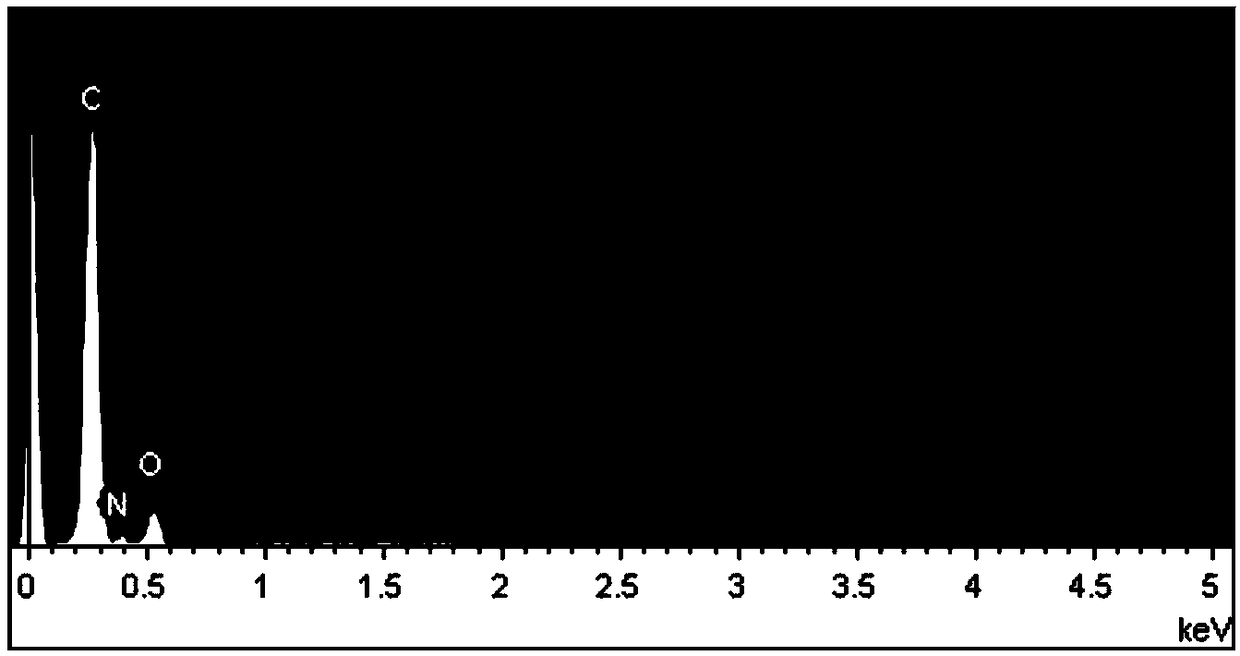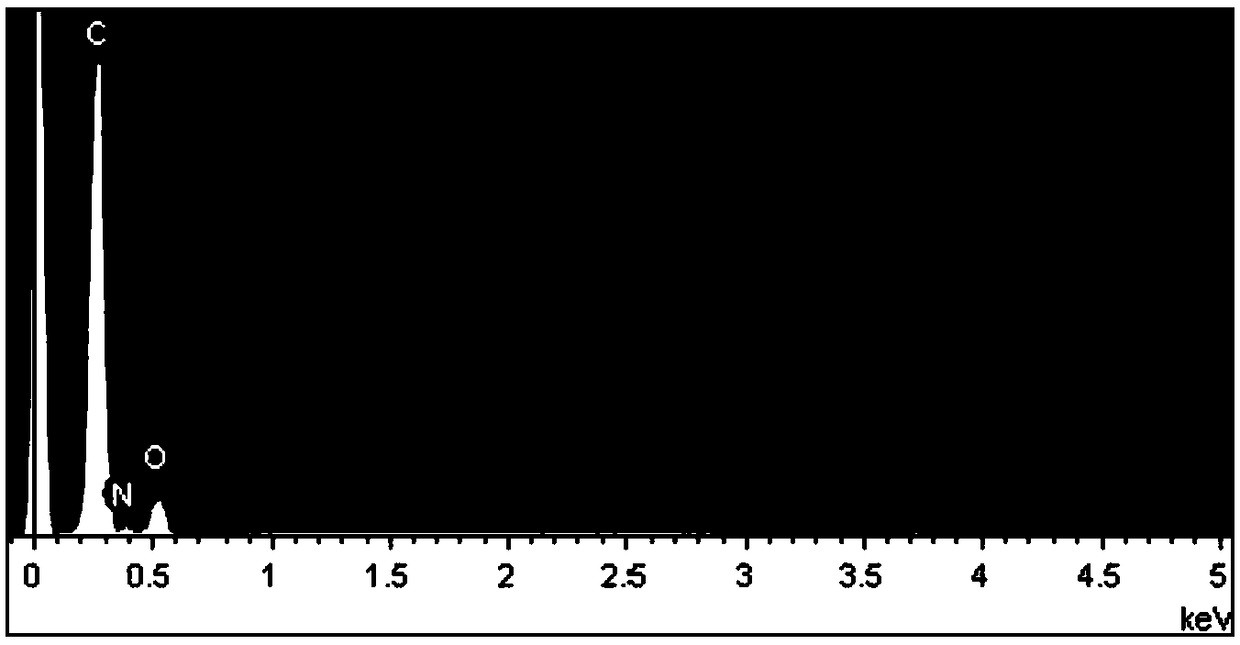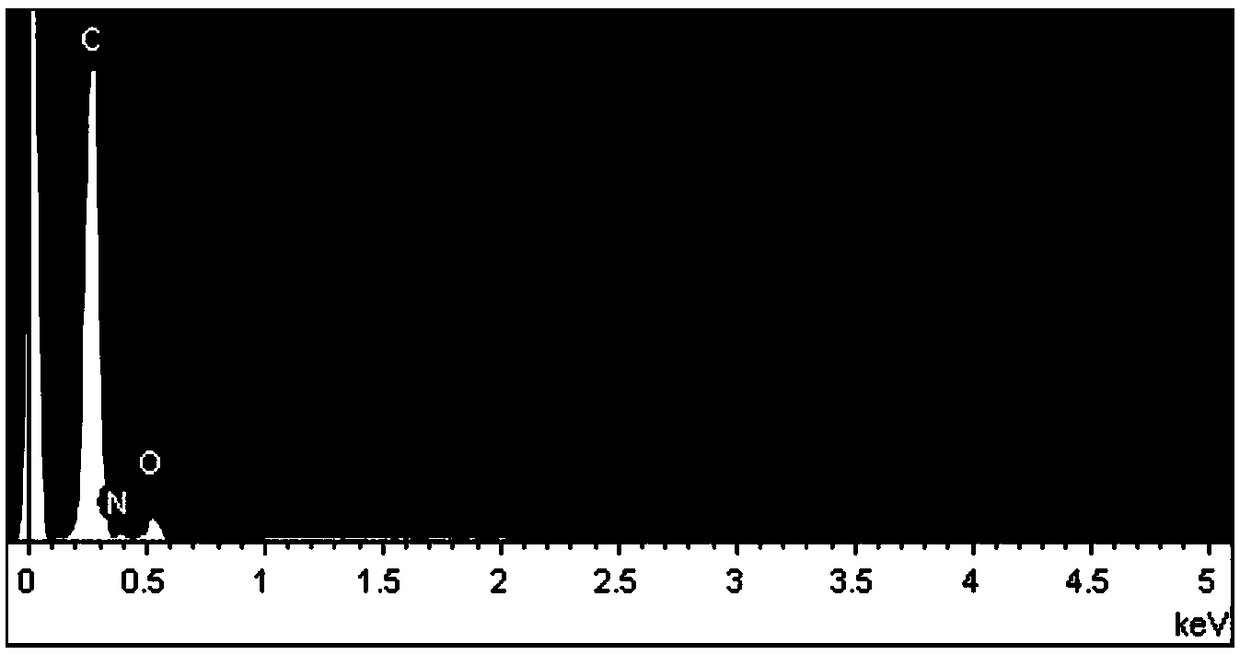Method for quick lossless distinguishing of polyamide product
A polyamide and product technology, which is applied in the field of physical evidence identification, can solve the problems of polyamide products with insufficient crystallinity, small peak intensity of fingerprint spectrum, and difficulty in determining the attribution, and achieve the effect of enriching fiber identification methods and simple operation
- Summary
- Abstract
- Description
- Claims
- Application Information
AI Technical Summary
Problems solved by technology
Method used
Image
Examples
Embodiment 1
[0062] Place the sample 1 on the sample stage of the electron microscope, wait for the electron microscope to be vacuumed, apply a voltage of 20KV, and work at a distance of 10mm. Select a point with a flat surface and magnify it by 30 times for analysis. Record the elemental composition of the sample, the results are as figure 1 and as shown in Table 2, figure 1 Among them, the ordinate is the intensity of the peak, and the more the element content, the higher the peak. Table 2 shows the weight percentage and atomic percentage of C, N, and O elements quantitatively analyzed by the energy spectrometer.
[0063] Table 2 Elemental composition of sample 1
[0064] element
[0065] The same method was used to analyze and repeat the test five times, and the specific elemental composition of the samples was averaged to calculate the average percentage of C atoms. The results are shown in Table 6.
Embodiment 2
[0067] Place sample 2 on the electron microscope sample stage, wait for the electron microscope to be evacuated, apply a voltage of 20KV, and work at a distance of 10mm. Select a point with a flat surface and magnify it by 100 times for analysis. Record the elemental composition of the sample, the results are as figure 2 and as shown in Table 3, figure 2 Among them, the ordinate is the intensity of the peak, and the more the element content, the higher the peak. Table 3 shows the weight percentage and atomic percentage of C, N, and O elements quantitatively analyzed by the energy spectrometer. .
[0068] Table 3 Elemental composition of sample 2
[0069] element
[0070] The same method was used to analyze and repeat the test five times, and the specific elemental composition of the samples was averaged to calculate the average percentage of C atoms. The results are shown in Table 6.
Embodiment 3
[0072] Place the sample 3 on the sample stage of the electron microscope, wait for the electron microscope to be evacuated, apply a voltage of 20KV, and have a working distance of 10mm. Select a point with a flat surface and magnify it by 100 times for analysis. Record the elemental composition of the sample, the results are as image 3 and as shown in Table 4, image 3 Among them, the ordinate is the intensity of the peak, and the more element content, the higher the peak. Table 4 shows the weight percentage and atomic percentage of C, N, and O elements quantitatively analyzed by energy spectrometer.
[0073] Table 4 Elemental composition of sample 3
[0074] element
[0075] The same method was used to analyze and repeat the test five times, and the specific elemental composition of the samples was averaged to calculate the average percentage of C atoms. The results are shown in Table 6.
PUM
 Login to View More
Login to View More Abstract
Description
Claims
Application Information
 Login to View More
Login to View More - R&D
- Intellectual Property
- Life Sciences
- Materials
- Tech Scout
- Unparalleled Data Quality
- Higher Quality Content
- 60% Fewer Hallucinations
Browse by: Latest US Patents, China's latest patents, Technical Efficacy Thesaurus, Application Domain, Technology Topic, Popular Technical Reports.
© 2025 PatSnap. All rights reserved.Legal|Privacy policy|Modern Slavery Act Transparency Statement|Sitemap|About US| Contact US: help@patsnap.com



